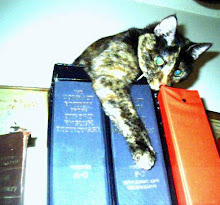 (Post and Grant Avenues after the 1906 earthquake and fire, San Francisco, CA)
(Post and Grant Avenues after the 1906 earthquake and fire, San Francisco, CA)
When I lived in San Francisco, I read everything I could about the earthquake threat and, in particular, the quake of 1906. I was not complacent about my risk as a resident, for one thing. For another, I knew that the class and race configuration of the city had been permanently altered by that event.
Most years on April 18th, you'd find me shivering with others at 5:12 a.m. in a cluster around the fireplug at 19th and Church as it was spray-painted gold again in a touching annual ceremony held by the San Francisco Fire Department. Because of water mains broken during the 7.8 Richter, 42-second long shaking, the first hydrant which turned out to be functional in fighting the fire which destroyed most of the city was the one far west at 19th and Church, near what was then a Jewish cemetery. Noe Valley and beyond were saved because of that hydrant.
I lived in the Mission District those years, on the same block as the original Levi Strauss factory. Most of my block had burned, but within sight of my front door was a row of six Queen Anne Victorians which survived, somehow skipped over by the blaze. It gave me a daily feel of what the city had looked like, before. (Old U.S. Mint at 88 Fifth Street, San Francisco, CA; photo by Mike Hofmann)
(Old U.S. Mint at 88 Fifth Street, San Francisco, CA; photo by Mike Hofmann)
One year I went on a tour of the original U.S. Mint, now a museum, downtown on Fifth Street. It was one of the few structures which survived the fires in that whole swatch of S.F. It had been built around a central courtyard which contained a well. At the time of the quake, it contained a third of the gold bullion in the United States. After the quake stopped, the Mint director and most of its employees rushed to protect the building from looting. But theft turned out not to be the threat. Instead, the fires bore down on them, and the trapped workers formed a bucket line from the well to interior walls, tossing water relentlessly on the stone to keep the entire contents of the buildings -- including themselves -- from bursting into flame. The glass windows melted and granite stone facing on the outside was popped free like Legos, but the Mint did not burn, thanks to these brave folks.
It was on this tour I heard another fascinating 1906 quake story. The extent of the fire, 500 city blocks, ranged more or less from Van Ness Avenue to the docks. The destroyed area included China Town, Little Italy, the Barbary Coast, and most of the famous hotels, civic buildings, and banks of the city. Having metal, "fire-proof" vaults did not protect the great banks from loss, because, as they discovered one by one, the internal temperature was so high from the blaze outside that when the vault door was opened and oxygen reached the money inside, it spontaneously combusted. The only safe course was to wait five days for the metal to cool.
But the city was in desperate need of cash, immediate cash. One tiny bank, the Bank of Italy, had been founded in 1904 by Amadeo Giannini. Giannini had some background knowledge in safes and vaults, enough to understand their limitations. He had not outfitted his bank with a vault. Instead, when the quake struck, the bank's money was transported out of town fast enough to avoid the conflagration. Once the fire was stopped, Giannini retrieved his money and became virtually the only banker in the city able to offer cash, loans, and emergency liquidity. He also "immediately chartered and financed the sending of two ships to return with shiploads of lumber from Washington and Oregon mills which provided the initial reconstruction materials and surge."
Because of his successful exploitation of the circumstances arising from disaster, Giannini's bank was launched on a career of wealth and power. During the 1920's, it shed its antiquated former name and became what we know today as the Bank of America.
[Cross-posted at Group News Blog.]
Friday, December 19, 2008
WHY I SEARCH OUT PRIMARY SOURCES
Posted by
Maggie Jochild
at
2:05 PM
![]()
Labels: Bank of America, Bank of Italy, Disaster, San Francisco Earthquake, U.S. Mint
Subscribe to:
Post Comments (Atom)





1 comment:
you say fireplug?!?!
I thought that my mother was the only human on earth who said fireplug!
Interesting that you should mention legos. When I was little, I thought that dumping my Legos on the floor all in one go (turning the bucket upside-down and emptying it all at once) caused earthquakes. I had done that once, and right as the blocks hit the wood floor, a small earthquake hit. For a long time afterword, I would only take my Legos out in handfuls.
Okay, I must get away from the computer. My apartment is so cold that I can no longer move my fingers properly...
Post a Comment